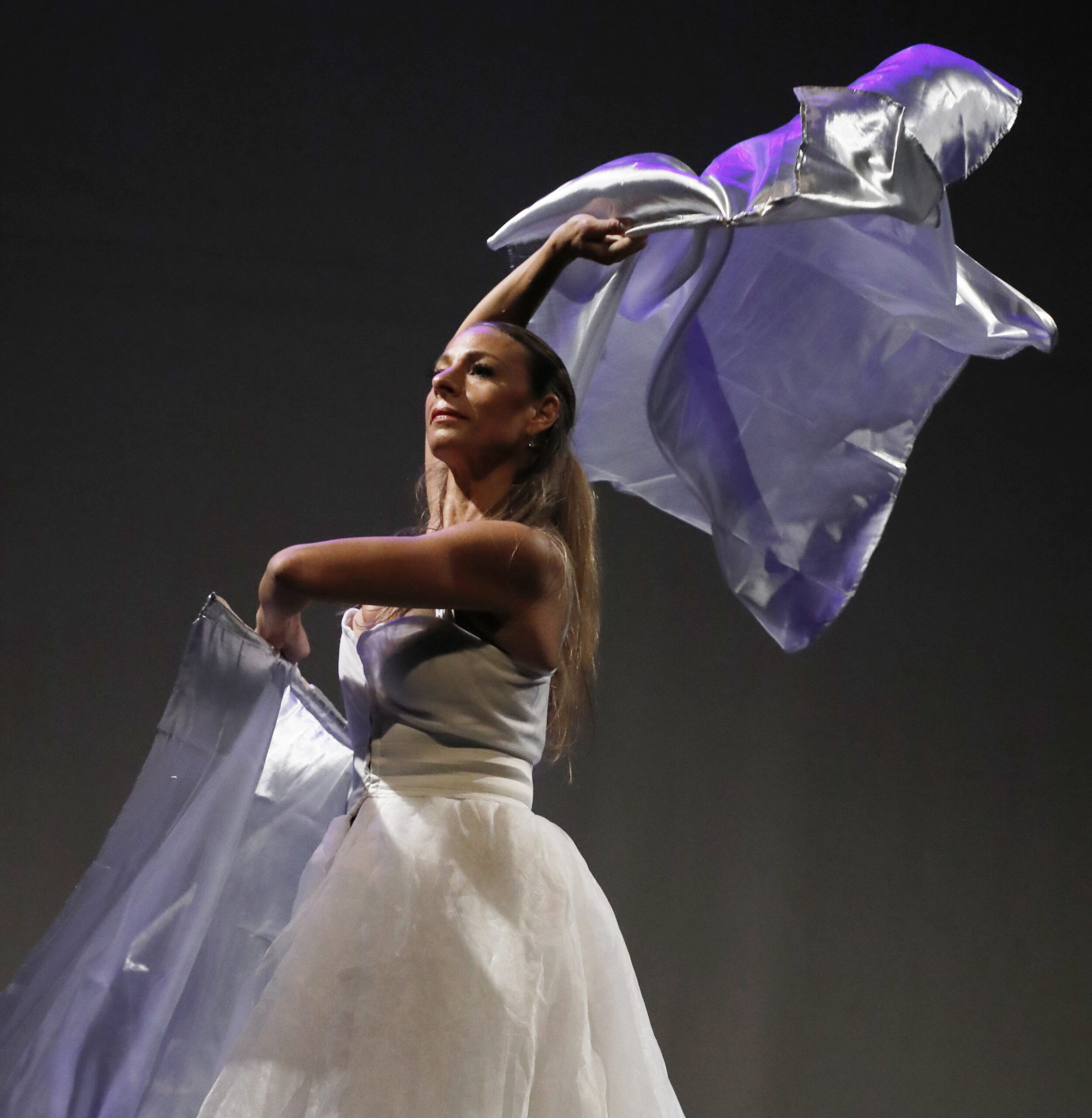Having seen a similar show based around one particular dancer last year, I was somewhat wary of possibly seeing another diva showing us her moves. The difference in this performance was the stripping down of bare emotion to provide the audience with a view of the protagonist’s inner turmoil. However, I am not sure this is what I want to see in a dance. Billed as ‘The journey of a woman facing life’s most challenging experiences’, I just wasn’t made to feel bothered enough.
The performance starts with a hugely magnified film of Maria Caruso projected on a screen in front of the stage, dancing, her voiceover describing her previous one-woman show, Metamorphosis. She tells us that she left her soul on the stage on the last day of her performance on 4th July 2022. This was the first of many references back to a show which few of us in the audience will have seen or care about. We are there for the current performance, after all. Had Caruso engaged a director they might well have told her this (no director is credited, Marcelo Braga De Carvalho is noted as ‘Dramaturg’). To use the huge projection of her body right at the beginning of the show is giving away an important dramatic construct too early and leads to a somewhat bathetic change of tempo when we next see her as a small figure on the huge Drury Lane stage. A smaller venue might have given her the intimacy needed for such a personal performance.
Once the film ended, we are left sitting looking at a bare black stage with nothing but dry ice, wondering what was going to happen next. The light eventually shows Caruso tied to a chair struggling to free herself and strip off the black tape from her mouth. She then proceeds to slap the floor with a rope (an indication of whipping/torture). Once she goes off stage, we are again left with an empty set for a while with nothing happening.
The programme tells us that Caruso is responsible for the concept, text (her voiceover), choreography, costume and set design. It was a mistake not having other people involved as they might have advised against some of the more trying parts of the event. The undoubted star of the show was the music by Ryan Onestak with a score reminiscent of Philip Glass and Arvo Pärt, making emotionally painful use of percussion and strings to underline the dancer’s misery.
Still, it was good to see a strong shapely woman in place of the usual stick thin dancers we are supposed to admire. In this, Caruso provides a good role model of how far a girl can go, if only she tries hard enough. She kicks and swings her arms around with vigour and definitely has stage presence, though I am unsure about the success of the choreography. It left me cold. With lots of dresses incorporating extraneous material, much of the dance involved flapping the material around which might be acceptable once, but not on repeat, though she did once substitute silver material on a stick as waving wings.
The piece is theoretically about ‘humanity’s power to choose light and love in the face of adversity’, though in fact it seems more like a working out through dance therapy of Caruso’s pain at more than one miscarriage. Call me old-fashioned, but I think the loss of a child is a sufficiently terrible and frequently experienced event to stand on its own without the wrap-around New Age terminology, ‘We must create our own space….I become the sum of my experiences…’ ; or about her tortured soul – ‘I feel empty and alone’, ‘I feel so hopeless’, ‘buried in darkness’ …all too much narcissistic introspection. When she danced with a cheval mirror, the literally self-reflective meaning was clear, but more such emphatic symbolism would have helped. That said, it is a brave woman who stands on stage and rips open her emotions. It just did not move me in the way I am sure it was meant to.
Dancer & Text: Maria Caruso, Dramaturg: Marcelo Braga De Carvallho
Choreography: Maria Caruso, Music: Ryan Onestak
Producer: M-Train Productions
Performance Dates: 2 & 3 October 2024, Time: 7.30pm

